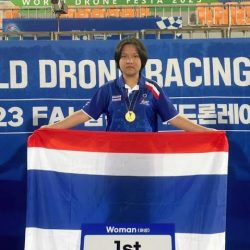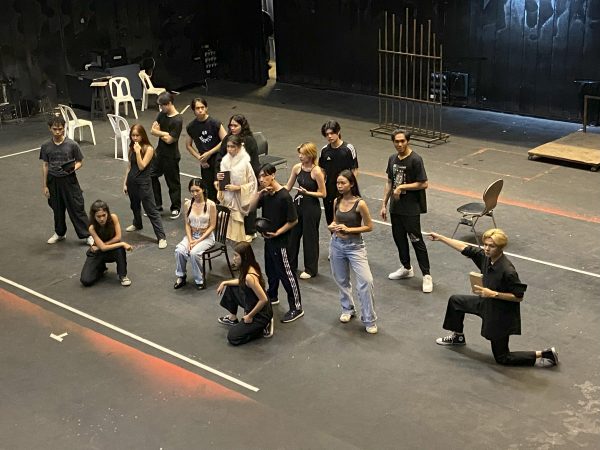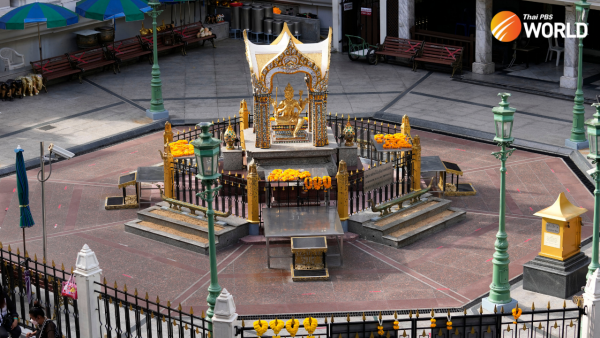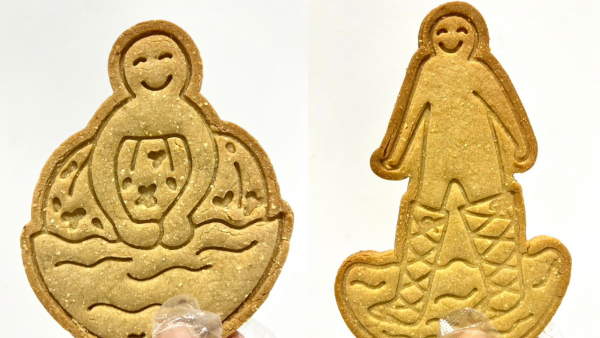A Journey Through Time: the Si Thep and the World Heritage Exhibition

The Bangkok National Museum is currently hosting an enthralling exhibition titled “Si Thep and the World Heritage”, shedding light on the recent recognition of the ancient city of Si Thep as a world cultural heritage site. This exhibition offers a unique opportunity to delve into the rich history, cultural significance, and global importance of Si Thep, celebrating its newfound status on the world stage.
Located in Phetchabun Province, approximately 450 kilometres north of Bangkok, the ancient town of Si Thep has a truly captivating history. It evolved from a prehistoric farming village in the Lopburi-Pa Sak River Valley, with roots dating back 2,500 to 1,500 years ago. Si Thep’s transformation into a prominent centre for trade and cultural exchange was fuelled by intensive salt and iron mining, along with its strategic location bridging the Chao Phraya lowland and the Korat Plateau, and a host of Dvaravati and pre-Khmer arts.
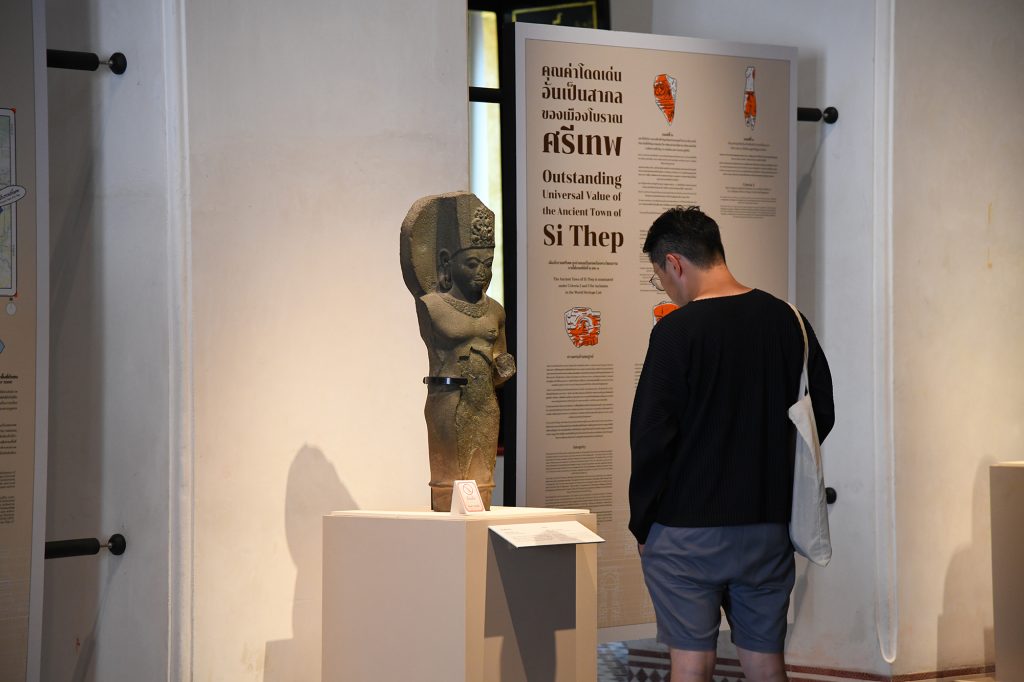
The exhibition provides an intimate and accessible journey through the story of Si Thep. Visitors can explore maps of Thailand, highlighting Phetchabun Province and the Si Thep Historical Park. It also offers a chronological narrative of Si Thep’s history, delving into the city’s unique features and showcasing the Khao Khlang Nok Archaeological Site and Khao Thomorat Archaeological Site. Information is available in both Thai and English, ensuring a comprehensive understanding of Si Thep’s heritage.
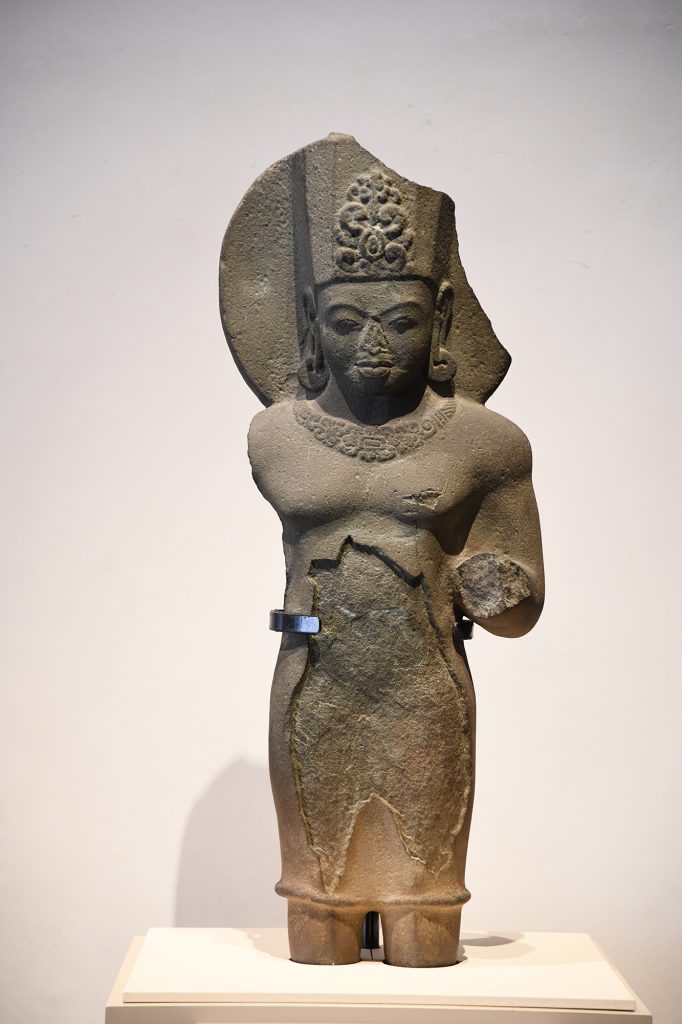
Furthermore, the exhibition proudly displays precious artefacts from Si Thep, including statues of revered deities. These historically significant artefacts, originally discovered in Si Thep, are now meticulously preserved at the National Museum in Bangkok and the National Museum Storage Facility in Pathum Thani Province.
The highlight of the exhibition is the seventh-century Surya, the sculpture of the Hindu Sun God, found at the Si Thep archaeological site. This male deity, wearing a faceted crown framed by a circular nimbus, is the solar god. As a divinity of Indian origin, Surya preserves through Indian renditions memories of that region’s dress—a long tunic. In total, six Surya sculptures have been found at the ancient town of Si Thep, with three of them exhibited at the Bangkok National Museum, while two others are on display at the Lop Buri National Museum and the Si Thep Historical Park. Sadly, the sixth Sun God of Si Thep has left the country, the victim of art smuggling.
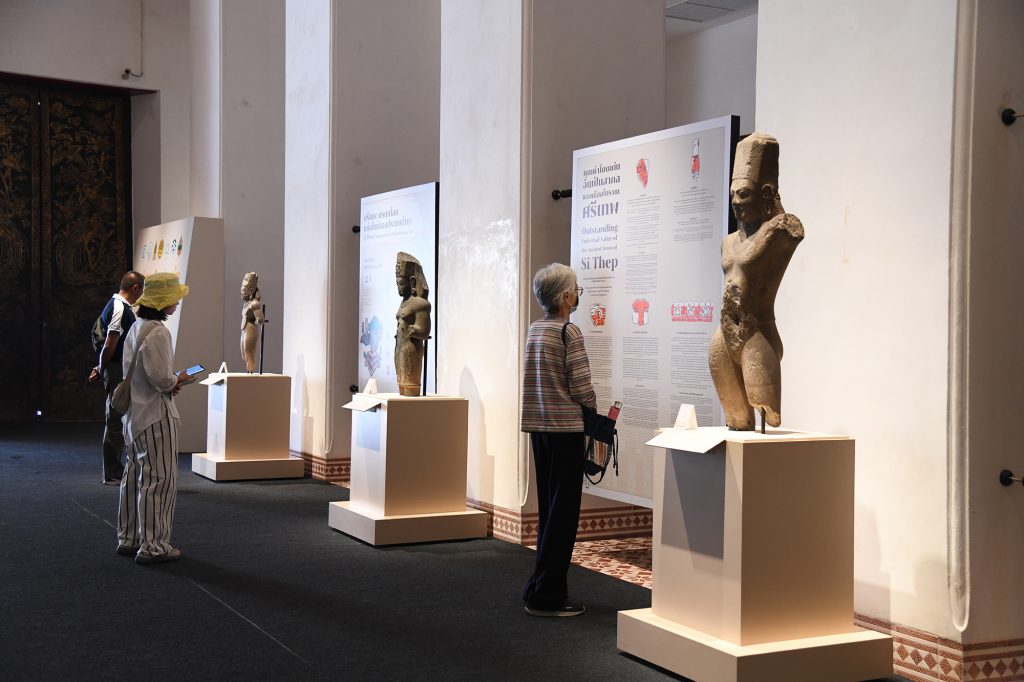
Professor Jean Boisselier, a revered French archaeologist known for his restoration of the ruins of the Angkor Wat, highlighted the exceptional nature of the Si Thep School of Art. Si Thep art deviates substantially from Dvaravati, Srivijaya, and pre-Khmer artistic styles. While the countenance of Vishnu may allude to pre-Angkor sculptures, closer scrutiny unveils intricate facial intricacies, particularly in the eyes, showcasing the distinctive aesthetics of Dvaravati art.
Among the unearthed treasures, statues of Vishnu stand as a testament to exquisite craftsmanship and lifelike realism. These statues exhibit an inherent elegance, featuring slender physiques adorned with conical headgear and a graceful, slightly bent posture at the waist and hips.
Visiting the “Si Thep and the World Heritage” exhibition offers visitors a journey through time.
In 1960, a group of looters, acting on the orders of art dealers, forcibly removed Buddha heads and other invaluable artefacts from the Khao Thamorat caves, situated just 20 kilometres west of the ancient town of Si Thep. Subsequently, Si Thep’s Buddha sculptures found their way into the hands of art collectors in Bangkok. In a remarkable twist of fate, Thai authorities discovered a concealed collection of Si Thep artefacts on the property of silk magnate Jim Thompson, now the location of the Bangkok Art and Culture Centre.
Visitors to the “Si Thep and the World Heritage” exhibition will have a rare opportunity to view the preserved Buddha heads from the Khao Thamorat cave, adding an extra layer of historical significance to their experience.
The exhibition is open to visitors at the Bangkok National Museum until January 14, 2024, from Wednesday to Sunday, between 9am and 4pm. This is a unique opportunity to explore the rich history and culture of Si Thep.
By Thai PBS World Feature Desk


